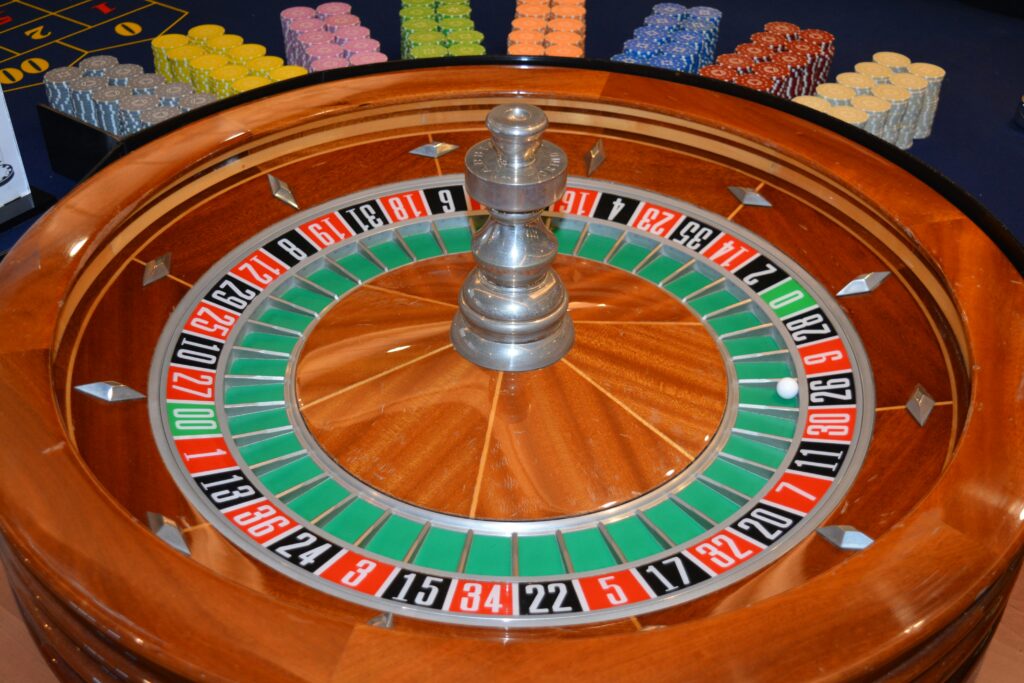Intro: Why Bet Smarter, Not Just Harder
The Challenge: A Sea of Betting Jargon
Entering the world of sports betting can feel overwhelming, especially with terms like “parlay,” “moneyline,” or “teaser” being thrown around. For beginners and casual bettors alike, the terminology alone can create confusion or lead to costly mistakes.
- Lots of jargon with specific meaning
- Terms can differ slightly across sportsbooks or regions
- Clarity is your first step toward confident betting
Why Knowing Bet Types Matters
Understanding the different types of bets is more than just vocabulary—it’s the foundation of smarter wagering. Each bet type comes with its own level of risk, reward, and strategy. The more you know, the better decisions you make.
Benefits of learning your bet types:
- Avoid surprises – Know what you’re placing before you lock it in
- Choose bets that align with your goals and risk level
- Spot value faster – When you understand the mechanics, you can recognize opportunities more clearly
- Adapt your strategy across sports, events, and betting platforms
Bottom Line: Knowledge is Edge
Smart bettors don’t just rely on luck or gut instinct—they rely on an understanding of the tools at their disposal. Learning how different bet types function is step one in building a more strategic, sustainable betting approach.
Straight Bets: The Basics
Straight bets are the most common and straightforward wagers in sports betting. They involve placing a single bet on the outcome of a game or event—the foundation on which most betting strategies are built.
Types of Straight Bets
Understanding the key types of straight bets is essential to making informed decisions:
- Point Spread
You’re betting on the margin of victory. The favorite must win by more than the spread, while the underdog can lose by less than the spread (or win outright) to cover the bet.
Example: If Team A is favored by -6.5, they need to win by 7 or more.
- Moneyline
This is a straight-up bet on which team will win. The odds will vary depending on which side is the favorite and by how much.
Example: A -150 favorite means you’d need to wager $150 to win $100. A +130 underdog would earn you $130 on a $100 bet.
- Totals (Over/Under)
You’re betting on whether the combined final score goes over or under the number set by the oddsmakers.
Example: If the total is set at 48.5 and the game ends 27-24, the total score is 51—so the “Over” wins.
When to Use Each Bet Type
- Use point spreads when you’re confident about a team’s margin of victory, especially in uneven matchups.
- Use moneylines for close games or when backing a strong underdog—riskier, but with higher payout potential.
- Use totals when you have a strong feel for the game’s tempo, defense/offense matchups, or weather conditions.
Straight bets are ideal for beginners but still essential tools for seasoned bettors who prioritize strategy over splash. They’re easy to manage, easier to analyze, and offer clear risk-reward scenarios.
Parlays: High Risk, High Reward
A parlay is a single bet that links two or more individual wagers. To win the parlay, every leg—each individual bet—must hit. Miss one, and the whole thing crashes. The appeal? Payouts that multiply fast. The more you stack, the bigger the return, because the odds compound. That’s the lure: bet small, win big.
But here’s the reality. Most pros avoid parlays, or at least handle them like a live wire. The house edge snowballs with each added leg. Even if each pick seems solid, stringing them together lowers your overall chances dramatically. Betting two games at -110 odds? You’ll only hit both around 48% of the time. Add more, watch your odds tank.
If you’re going to mess with parlays, don’t treat them like a regular strategy. Keep them small. Stick to games where you’ve done the homework, not just what “feels right.” Avoid mixing totally different sports or game types unless you’ve studied both. And most importantly, resist the urge to keep adding legs just to chase long-shot payouts. A four-leg win is great—until a fifth leg ruins it.
Parlays can be fun. They’re exciting. But they’re not the path to steady gains. Know what you’re risking, and treat them like fireworks: use with caution, and don’t get burned.
Teasers: Customizing the Spread
Teasers vs. Parlays — What’s the Difference?
At a glance, teasers and parlays may look similar—they both involve combining multiple bets into one ticket. But there’s a key difference:
- Parlays require all bets to win, with no changes to the lines.
- Teasers, by contrast, let you adjust the point spread (or totals) in your favor—making the bets slightly safer, but at a cost to your potential payout.
Think of teasers as a way to “soften” the odds. For example:
- If a standard spread is -6.5, a teaser might let you move it to -0.5.
- That makes a win more likely—but the combined odds are less lucrative than a true parlay.
When Teasing the Line Makes Sense
Teasers are especially useful in specific contexts where a small shift in the spread increases your win probability dramatically.
Good times to use teasers:
- NFL games with low totals where every point counts
- When controlling key numbers like moving across 3 or 7 (in football, for example)
- Pairing similar-strength matchups instead of mixing risky games
Hidden Risks Beginners Often Overlook
On paper, teasers sound like a safer play—but they’re far from a guarantee. Common missteps include:
- Over-teasing: Teasing too many games turns a modest edge into a longshot
- Ignoring odds changes: Some books adjust teaser pricing frequently, cutting into value
- Teasing bad bets: Adjusting a losing wager doesn’t automatically make it good—it can just delay the inevitable
Tip: Teasers demand just as much research as straight bets. Don’t use them to fix shaky picks—use them to fine-tune strong ones.
Prop Bets: Going Beyond the Final Score
Prop bets—short for proposition bets—let you wager on outcomes other than who wins or loses. Instead of picking a team, you’re betting on whether a quarterback will throw for over 250 yards, or if the first score of the game will be a field goal. These can be tied to player stats, team milestones, or obscure in-game moments like the length of the national anthem or the color of Gatorade dumped post-Super Bowl.
Casual bettors love prop bets because they’re accessible and fun. You don’t need to be a football strategist to bet on whether Steph Curry hits five three-pointers—it’s intuitive. That makes props the gateway drug of sports betting: low barrier, high entertainment value.
But underneath the flash, savvy bettors know props can hide real value—especially in niche markets. Books often focus their sharpest data models on high-volume core bets, not on whether a rookie wide receiver will have more than 3.5 receptions on a rainy Thursday night. Dig into player trends, matchup edges, injury reports—whatever might give you an angle others miss.
The trick is to stay disciplined. Don’t just chase long shots for excitement. Treat prop bets like any other wager: with a plan and a reason behind it.
Futures: The Long Game
Futures bets are for the patient. You’re wagering on something that won’t settle until way down the line—think Super Bowl champs, season win totals, or who’ll take MVP. The appeal is clear: the payouts can be big, because you’re locking in early against uncertainty. Picking a dark horse before the hype can mean serious profit.
That said, there’s a cost. Futures tie up your bankroll for months. Money you could use for week-to-week games sits in limbo until the outcome plays out. If you’re working with a limited budget, putting too much into futures can choke your flexibility.
Timing is everything. Place your bet too early, and you risk injuries or surprises tanking your pick. Wait too long, and the value vanishes as the odds shorten. The trick is to monitor line movements and act when the odds swing slightly out of sync with public perception or early narratives. Value hides where the consensus hasn’t caught up yet.
Bottom line: futures are a long play. Worth it if you spot an edge and can afford to wait. Just don’t park more money there than you can afford to forget about.
Live Bets: Real-Time, High-Stakes
In-play betting, or live betting, throws you right into the action—placing wagers while the game is unfolding. Every punt, pass, or pitch can shift the odds within seconds. Unlike pre-game bets, where lines are set before kickoff, live bets move fast. You’re betting on momentum and moment, not just stats.
The key ingredients for success? Speed, instinct, and discipline. You have to read the game, react quickly, and avoid chasing every shift. It’s easy to get caught in the thrill and overextend your bankroll chasing comebacks or “sure things” that evaporate.
Smart live bettors pick their spots. They use early-game cues, watch for injury impact, and look at game pace. And they don’t bet through laggy platforms. Having a sportsbook with ultra-fast data updates can make or break your odds—literally. If your app’s five seconds behind, you’re betting on old information.
Used wisely, in-play betting turns your read of the game into a weapon. But without control, it’s just chaos wrapped in flashing odds.
How It All Ties Together
Smart betting isn’t just about picking the right bet type—it’s about knowing when to use it. The most effective bettors don’t rely on a single strategy. Instead, they adapt to the game, the market, and their own goals.
Mix Strategies, Not Just Bet Types
Combining different approaches can improve results and reduce risk over time. Instead of going all-in on parlays or always chasing live bets, savvy bettors strategically diversify.
- Use straight bets for steady, lower-risk plays
- Add props or futures to find value in long-term predictions
- Mix in live betting to capitalize on game-time momentum
Managing Risk With Diversification
Every wager carries inherent risk. Building a diverse portfolio of bets helps you spread exposure and avoid overcommitting to any single outcome.
- Don’t place all your bets on a single game or outcome
- Spread stakes across bet types, timeframes, and odds levels
- Use smaller units for higher-risk plays (like parlays or long-shot futures)
Math Matters—Don’t Skip It
Understanding the numbers behind your bets makes a major difference. It’s not about being a math whiz—it’s about recognizing value, implied probabilities, and expected outcomes.
- Know how odds reflect probability—and when the numbers don’t add up
- Track your wins, losses, and ROI to adjust intelligently
- Identify bets with long-term +EV (positive expected value)
For a deeper dive, check out this guide: read this next → The Mathematics of Betting: Calculating Risks and Rewards
Wrap-Up: Pick the Bet That Matches Your Game
There’s no universal pick that fits every kind of bettor. Each wager type has its own rhythm, risk, and reward curve. What works for someone deep into stats and injury reports won’t fit the guy placing a quick pick during halftime.
This is where knowing yourself matters. If you’re a numbers-first kind of person with time to research, straight bets and well-timed futures might be your best move. If you thrive off intuition and fast reads, live betting could deliver the edge. More casual? Prop bets might keep it fun without getting too deep. Just understand the limits.
Don’t fall into the trap of chasing “the big one” like a parlay jackpot unless you’re ready to lose more than you win. A smarter approach blends confidence, knowledge, and patience. When you play within your own framework—and not someone else’s—you turn betting into strategy, not guesswork. At that point, it doesn’t feel like gambling. It feels like a game plan.


























































































































































































































































































































 Korlan Yvonthor is the co-founder of oddsempirerush and a leading voice in sports analytics. Combining technology, data, and strategy, he plays a key role in shaping the platform’s vision and delivering trusted resources for sports betting enthusiasts.
Korlan Yvonthor is the co-founder of oddsempirerush and a leading voice in sports analytics. Combining technology, data, and strategy, he plays a key role in shaping the platform’s vision and delivering trusted resources for sports betting enthusiasts.

